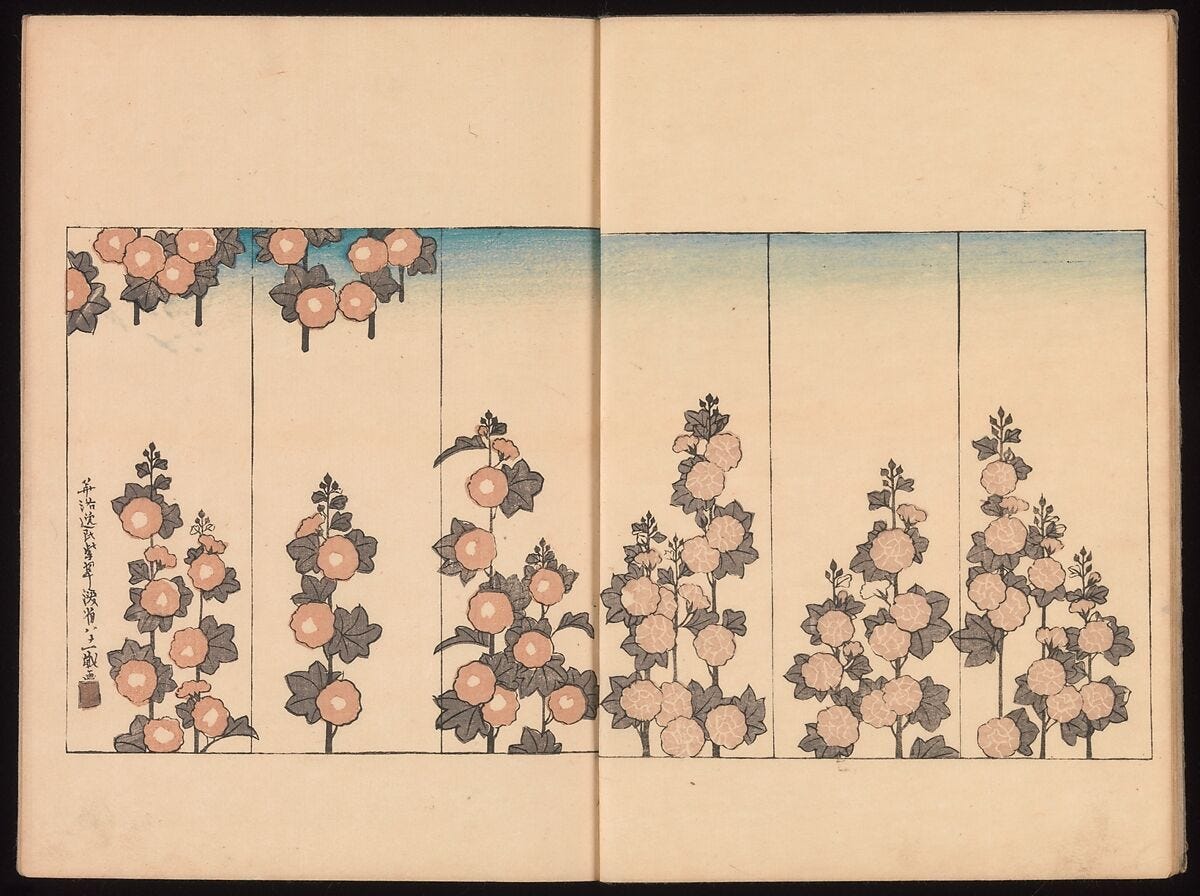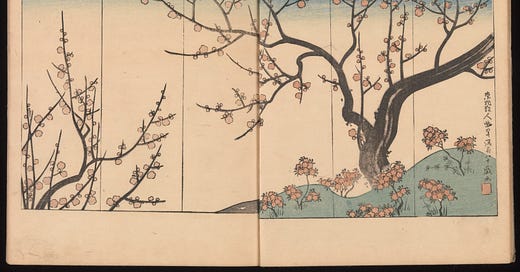ONE of the things I perpetually tell myself I’m going to learn how to do is to identify New York City trees on sight. This always feels most pressing, delightful, and rewarding in spring, when many of the trees are in bloom. I mean, wouldn’t it be amazing to know (and retain!! the most crucial step) the difference between a Kanzan, a Yoshino, and a Higan cherry tree?? Alas, I feel lucky when I can confidently identify a tree as “cherry.”

Even when I do dedicate some of my increasingly frayed attention span to reacquainting myself with the names and characteristics of the city’s trees, I seem to forget them as soon as the blooms are replaced by leaves. In years gone by I swore up and down I’d never forget how to identify a “Callery pear,” but before sitting down to write this dispatch had to search “smelly nyc tree” just to remember what it was called.
Anyway, I saw a lot of trees in bloom yesterday, on my run from Bushwick to Inwood Hill Park. These probably included cherry trees, magnolias, maybe a crabapple, and most certainly Eastern redbuds. (I have had no trouble being able to identify Eastern redbuds ever since I went on a foraging tour—in 2017!!—with “Wildman” Steve Brill, who suggested serving the edible buds on ice cream.)
I saw hundreds of daffodils—the drenched yellow kind; the ones that look like an egg, with white petals and a rich orange, yoke-y center; the ones that look like an egg with sickly, pallid yellow yokes (still pretty though). Unidentified purple flowers and unidentified white flowers. At one point, while running through Central Park, I looked down and noticed a delicate pink petal plastered to my cold, damp thigh. When it rained, I exchanged nods of recognition and commiseration with the people running in the other direction. And when I jogged down to Spuyten Duyvil Creek (the scrap of water connecting the Hudson and Harlem rivers) I spied a Great Egret wading elegantly for brunch.
Signing up for a marathon well before I knew who would win the election and what a shitshow everything would be right now continues to be both a blessing and a curse. It’s keeping me active. It’s certainly forcing me outdoors, and further afield, than I might otherwise be venturing. Yesterday was really my first time exploring Inwood Hill Park, aside from the parts I’ve seen on the Great Saunter. That’s nice. But it’s also sucking up a great deal of my physical and mental energy, and not leaving much in reserve.
I’m contemplating the days and weeks after the marathon with a mixture of overly-optimistic anticipation (more time and energy to read, write, paint, bike, garden, be a good citizen, socialize!) and panic (will I stop running cold turkey and go into a lazy, depressive spiral, or can I keep the habit without the constraints of a set training plan and concrete goal??).
We’ll be vacationing in California for five days after the marathon—do you have hiking/beach/camping destinations to recommend within a 4-5 hour drive from Monterey? Currently contemplating a couple days car camping in Big Sur and then maybe heading inland? I’ve never been to Yosemite, but it might be too late to plan a big bucket-list trip like that. In short, open to any and all suggestions.
reading list
expect the unexpected [derogatory]
When I clicked on this New York Times homepage link about how tariffs are impacting small businesses, expecting yet another story about supply chains, I was surprised to find that they led with a wilderness guide who is losing business because clients are cancelling trips simply over their financial anxiety over the economy. Also, parks cuts mean getting permits to run those trips is harder and slower. He may have to start laying employees off soon as a result.
‘for the trees have no tongues’
The Trump administration will no longer allow outside groups, tribes, and local governments to challenge logging proposals across nearly 60 percent of US national forest lands, and regional Forest Service officials have been told to increase timber production by 25 percent over the next five years.
The given reason was “wildfire prevention” but the oldest and biggest trees most coveted by the logging industry are also the most resistant to wildfire (in addition to absorbing and storing much more carbon than smaller, younger trees). “Science shows that harvesting mature and old-growth trees can actually make wildfires worse,” Sierra Club’s Anna Medema told Georgina Gustin at Inside Climate News.
Obviously, we have bigger fish to fry, and this is surely among the least-awful things that the president has done, but the symbolism of ivy being replaced by objets d’or is really quite something. (Read to the end to find out where the ivy ended up.)
etc.
The routesetters at a chain of climbing gyms in California are on strike.
If you’re an REI member, you might consider the REI Union’s request that you vote “no” for all the proposed candidates for the Board of Directors. Some of their given reasons for objecting to REI’s current trajectory:
the company endorsed Doug Burgun, Trump’s pick for Interior Secretary, who promptly went on to push for more oil and gas drilling on public land
the NYC store stopped providing respirators to ski shop employees who work with hazardous chemicals in an enclosed space
hired an anti-worker law firm that has counted Trump, Amazon, and SpaceX among its clients to negotiate with the union




I have also wanted to work on my tree identification skills. It’s so hard, especially in winter when all you have to go on is the bark! I found Carey Russell at the Dendro Lab (https://www.instagram.com/the.dendro.lab) who leads tree ID walks in NYC and I’m going to try to attend some this spring/summer.
I haven’t seen redbuds or crabapples in bloom here yet. Central Park is at least a week ahead of other parts of NYC.
anyway GO TO YOSEMITE! It will blow your socks off just to see those cliffs and peaks as you drive into the valley.